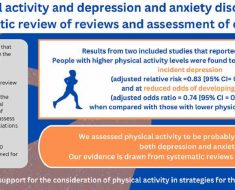Although the Office of the National Coordinator of Health IT’s info-blocking rules have now been in effect for months, many healthcare organizations are still reporting confusion about how to come into compliance.
In fact, some say they don’t know what info-blocking actually entails – or how to avoid it.
“Information blocking is a practice that interferes with access, exchange, or use of electronic health information, unless the practice is required by law or falls under an exception,” explained Adam Greene, partner at Davis Wright Tremaine.
“That being said, a healthcare provider is only information blocking if it knows its practice is unreasonable,” Greene continued.
Greene will be presenting at HIMSS21 this summer – along with healthcare attorney Amy Leopard from Bradley Arant Boult Cummings – on common misconceptions around ONC’s info-blocking rule and how providers can come into compliance with it.
“One common misconception is that the information blocking rule requires you to proactively post electronic health information to a patient portal, without first receiving a request to do so,” explained Greene.
“Providers need to evaluate whether they engage in activities that would subject them to the rules governing health information networks or HIT developers,” Leopard added.
Such rules, along with the activities defining each actor, can be found on the ONC’s website.
One useful pathway toward compliance, said Greene, is to locate potential areas of greater data-sharing seamlessness
“Healthcare providers, IT developers and health information exchanges should look at what technical and administrative systems are involved in releasing electronic health information, and then identify any friction points that may be an ‘interference,'” Greene said.
“This could be an intentional delay, contractual security requirements or failures to respond to requests,” he continued.
“They should then examine each practice to identify whether it falls under an information blocking exception,” he added.
When asked what lessons attendees should take from the session, Leopard stressed the importance of prioritization.
“Trying to identify every potential information blocking can be overwhelming,” she said.
“Focus on the big risk areas first, like practices that discriminate between ‘friends’ and competitors or interfere with timely patient access requests,” she continued.
Adam Greene and Amy Leopard will explain more in their HIMSS21 session, Information Blocking One Year Later: Key Challenges. It’s scheduled for Friday, August 12, from 12:30-1:30 p.m. in Caesars Summit 211.
Kat Jercich is senior editor of Healthcare IT News.
Twitter: @kjercich
Email: [email protected]
Healthcare IT News is a HIMSS Media publication.
Source: Read Full Article





